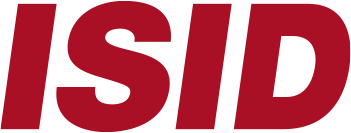In the rapidly evolving field of healthcare, medical video recording software has become a vital tool for capturing, storing, and managing medical procedures and diagnostic imaging. When choosing the right solution, healthcare organizations often face a critical decision: should they opt for cloud-based or on-premises video recording software? Each approach offers distinct advantages and drawbacks, and understanding these differences is crucial for making an informed decision. In this post, we’ll compare cloud-based versus on-premises solutions, highlighting their pros and cons, and demonstrate how VideoMed Health aligns with these considerations.
Cloud-Based Medical Video Recording Software
When it comes to selecting the right medical video recording software, healthcare organizations must weigh the advantages and drawbacks of cloud-based versus on-premises solutions. Each option offers distinct benefits in terms of accessibility, scalability, security, and cost. In this section, we’ll explore the key pros and cons of cloud-based medical video recording software, helping you determine if it’s the right fit for your facility.
Pros:
- Accessibility and Flexibility: Cloud-based solutions offer the advantage of accessing video files from any location with an internet connection. This flexibility is particularly beneficial for healthcare professionals who need to review medical videos remotely or collaborate with colleagues across different locations.
- Scalability: Cloud solutions can easily scale to accommodate growing amounts of video data without requiring significant upfront investments in hardware. As your needs expand, cloud services can adjust to handle increased storage and processing requirements.
- Automatic Updates and Maintenance: Cloud providers handle software updates and maintenance, ensuring that the system remains up-to-date with the latest features and security patches. This reduces the burden on IT staff and ensures continuous improvements without downtime.
- Cost-Effective: Typically, cloud-based solutions operate on a subscription model, which can be more cost-effective for healthcare facilities as it avoids large capital expenditures on hardware and allows for predictable ongoing costs.
Cons:
- Data Security and Privacy: Although cloud providers implement robust security measures, some healthcare organizations are concerned about the security of sensitive patient data stored off-site. Compliance with regulations like GDPR requires careful consideration of data protection measures.
- Internet Dependency: Cloud-based solutions rely on a stable internet connection. Any disruptions in connectivity can impact access to video files, which can be problematic in areas with unreliable internet service.
Ongoing Costs: While initial costs may be lower, the subscription model can lead to higher long-term expenses, especially if the storage needs are extensive or if the organization requires advanced features
On-Premises Medical Video Recording Software
Pros:
- Control and Customization: On-premises solutions provide greater control over the software and hardware environment. Organizations can tailor the system to their specific needs and integrate it closely with existing IT infrastructure.
- Enhanced Security: Storing data on-site allows healthcare facilities to implement their own security protocols and directly manage data protection measures. This can be reassuring for organizations with stringent compliance requirements.
- No Internet Dependency: On-premises systems do not rely on internet connectivity for access, making them a reliable option in areas with unstable internet service. This ensures uninterrupted access to video files.
Cons:
- Higher Initial Costs: The upfront investment for on-premises solutions can be significant, including costs for hardware, software licenses, and installation. Additionally, ongoing maintenance and support can add to the overall expense.
- Limited Scalability: Expanding on-premises solutions often requires purchasing additional hardware and software, which can be costly and require significant planning and installation time.
- Maintenance and Updates: Managing updates, maintenance, and security patches falls on the organization’s IT team. This can be resource-intensive and may lead to potential delays in implementing the latest features and security improvements.
Medical Video Recording Software

VideoMed Health
When considering the options between cloud-based and on-premises medical video recording software, VideoMed Health stands out by offering a solution that bridges many of the gaps between these approaches. VideoMed Health is able to provide cloud-based platform and on premise solution with seamless integration into existing Hospital Information Systems (HIS), offering the flexibility and accessibility benefits of the cloud while ensuring robust security measures.
Key Features of VideoMed Health:
- Centralized Management: VideoMed Health centralizes all medical video recordings, making it easy to manage and access videos from any location, whether you are using cloud or on-premises infrastructure.
- Scalability and Integration: The platform scales effortlessly to handle growing volumes of video data and integrates smoothly with various HIS and EHR systems, providing the flexibility and control that healthcare organizations need.
- Comprehensive Security: VideoMed Health emphasizes data security and compliance, ensuring that patient data is protected with advanced encryption and access controls, addressing common concerns associated with cloud-based solutions.
- User-Friendly Interface: With an intuitive interface, VideoMed Health simplifies the process of managing and accessing medical videos, reducing the complexity often associated with both cloud-based and on-premises systems.
In summary
Whether you lean towards cloud-based or on-premises solutions, VideoMed Health offers a versatile and secure option that combines the best of both worlds. Its comprehensive features and focus on integration and security make it an excellent choice for healthcare facilities looking to optimize their medical video recording and management processes.
